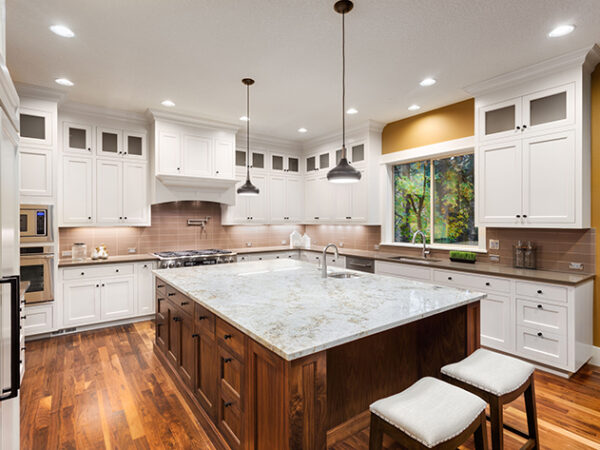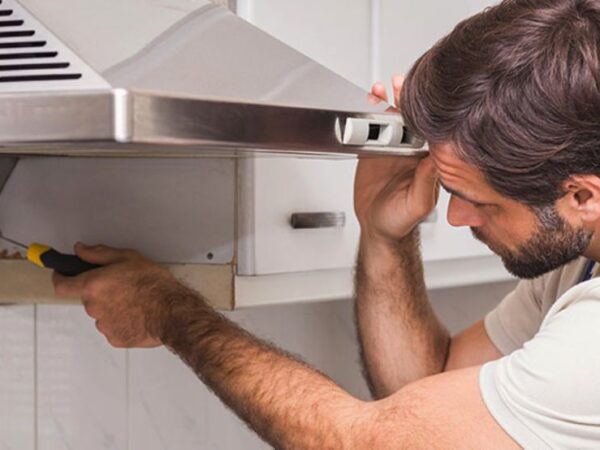The DIY revolution has swept across the United Kingdom, with an increasing number of homeowners seeking to add their personal flair to home décor. One popular trend that has emerged is DIY TV wall mounting – a thrilling prospect for many. However, before embarking on this exciting project, it’s essential to consider important factors carefully. In this article, we’ll explore the growth of UK-based DIY projects, focusing specifically on TV wall mountings while dispelling common misconceptions and highlighting key installation protocols needed for success. To provide context for our discussion around proper practices in installing your own television set-up at home, alarming statistics will be shared from widespread reports detailing typical errors found during these types of ventures throughout Britain today.
One common error is selecting an unsuitable wall mount.
There are various kinds of TV wall mounts available.
It is crucial to comprehend the various TV wall mounts accessible in the market before you consider attaching your television to the wall. Three main types exist: fixed, tilting, and full-motion mounts; each has a distinct purpose, and making an inappropriate selection could have adverse ramifications for both your living room aesthetics and TV set.
Mounts that can be tilted
Tilting mounts enable you to adjust the TV up or down for your preferred viewing angle, ideal for diminishing glare and enhancing the visual experience in areas with different lighting situations.
Mounts that are fixed.
The TV remains securely in place and flush against the wall with fixed mounts. These are perfect for rooms where eye-level positioning of the TV is necessary, without any need for movement or adjustment.
Mounts that provide full-motion capabilities
The full-motion mounts are incredibly versatile yet tend to be relatively complicated. With the ability to swivel, tilt and extend a TV in multiple directions comes enormous flexibility; however, it requires meticulous installation and may not accommodate all types of wall sizes or television models.
Understanding the Kinds of Walls in Houses Across the United Kingdom
The walls of UK houses vary in shape and size, so you must understand the diverse wall compositions before mounting your TV.
Walls made of plasterboard
Modern homes in the UK often feature plasterboard walls, which are generally easy to handle. However, mounting heavy objects such as televisions on them demands careful attention.
Brick walls
In the UK, older houses frequently have robust brick walls that offer a strong base to mount your TV. Nevertheless, drilling into bricks necessitates precise equipment and methods.
Finding studs and ensuring a secure mount.
Securing your TV mount to wall studs is crucial, regardless of your wall type. To help with this process, here’s how you can locate and secure studs using commonly available tools.
Invest in a quality stud finder readily available at hardware stores. This device makes finding studs effortless.
One can predict the position of nearby studs by following their pattern, as they are usually spaced uniformly. Locating one makes identifying others easier.
If you’ll be mounting your TV on a non-stud or plasterboard wall, it’s essential to utilise appropriate wall anchors. These will secure and hold up the screen, keeping it from suddenly falling down.
Getting either the height or angle wrong.
The TV viewing ergonomics
Ensuring your TV is mounted at an appropriate height and angle is crucial to achieving a satisfying viewing experience. Although living room configurations can differ in the UK, adhering to ergonomic principles can facilitate this process.
The optimal height for comfortable and efficient viewing.
For a comfortable viewing experience and to avoid neck strain, it is recommended to position the TV at eye level while seated.
The best viewing angle
When designing open-plan living areas, it is important to ensure that the TV can be seen from multiple seating arrangements. A full-motion mount, which provides flexibility in adjusting viewing angles for different positions, could be used.
These steps will help you achieve the best TV height and angle possible:
- Take Note of Seating Eye Level: Identify the typical eye level of those seated in your household watching.
- Mark the wall with a pencil at the desired height, and verify your measurements before proceeding to drill holes.
- Make sure your TV mount is precisely levelled both horizontally and vertically. You can use a spirit level to achieve accuracy.
Failing to address cable management.
The Technique of Hiding Cables
Many DIY TV wall mounting projects tend to overlook cable management. However, it is vital in improving the overall appearance of your living room. In the UK, multiple innovative methods exist to manage and hide cables efficiently while also being practical.
Cable trunking can be redone as wire moulding or a raceway.
In the UK, cable trunking is widely preferred to hide wires. These plastic conduits can be painted to match your wall’s appearance and manage your cables in an organised manner.
Wall-mounted shelves
Integrate wall-mounted shelves or cabinets to store your cable boxes, gaming consoles, and other devices. This effectively organises the cables while keeping them concealed from view.
Cable management combines safety and aesthetics.
Aside from appearance, safety is a vital element of cable management. Effective cable organisation minimises the chance of tripping and ensures that your arrangement remains tidy and free from clutter.
Make certain that:
- The cables are fastened securely and not hanging loosely.
- The surplus cable length is properly wrapped and concealed.
- There are no obstructions in the cable pathways.
Tools that are necessary for the job:
- During installation, a reliable set of screwdrivers can be your most dependable ally.
- Another good investment is a top-notch drill along with suitable drill bits to match your wall type.
- A stud detector is a must if you are looking to get the job done on the first attempt.
- Wall anchors are devices used to secure objects or equipment onto walls. They can provide additional support when attaching to a plasterboard or wall without studs.
Proper use of tools
It takes more than just having the right tools; knowing how to use them properly and with safety measures is equally important. To ensure efficient tool utilisation, consider these tips:
Each tool requires you to read its user manual and safety instructions.
Whenever required, use adequate safety gear, including gloves and goggles.
Before drilling or making permanent changes to your wall, ensure that you review and verify all measurements and markings.
By correctly utilising your tools, you can decrease the possibility of unforeseen incidents and guarantee a triumphant TV wall installation.
Conclusion
To sum up, embarking on a DIY TV wall mounting project can be fulfilling; however, it is imperative to steer clear of these typical blunders:
- Selecting an inappropriate wall mount for your TV and living space.
- Not considering the composition and location of your wall’s studs.
- Mounting your TV at the wrong height and angle.
- Neglecting cable organisation and appearance.
- Insufficient utilisation of tools and insufficient safety measures.
When undertaking the task of mounting your TV on the wall yourself, ensure that the topmost priority is given to safety and quality. Adhere strictly to guidelines as outlined in this post, take adequate time during every stage of the process and relish in delight when you have a stunningly mounted television screen adding beauty to your living space!





